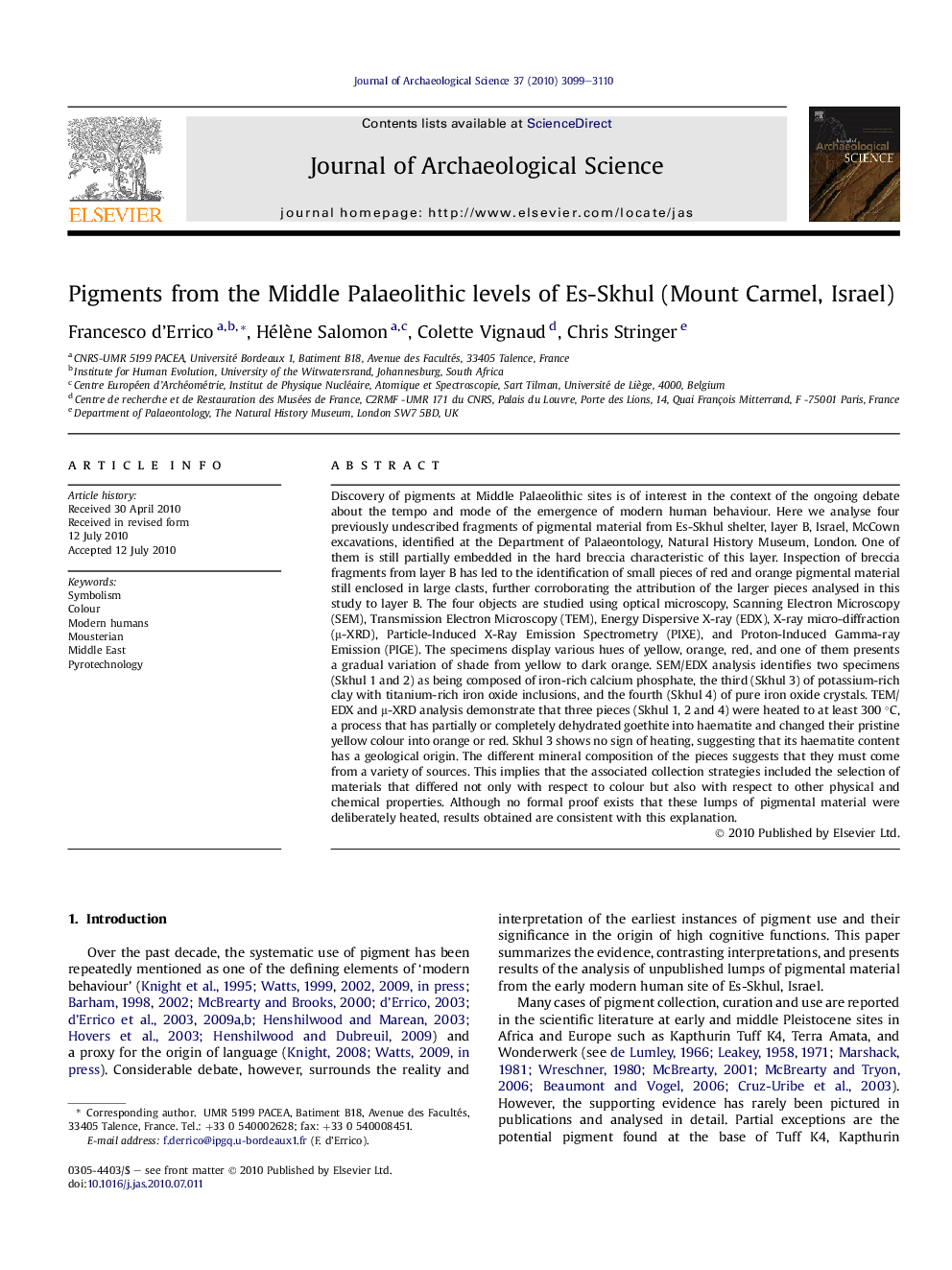| کد مقاله | کد نشریه | سال انتشار | مقاله انگلیسی | نسخه تمام متن |
|---|---|---|---|---|
| 1036593 | 943891 | 2010 | 12 صفحه PDF | دانلود رایگان |

Discovery of pigments at Middle Palaeolithic sites is of interest in the context of the ongoing debate about the tempo and mode of the emergence of modern human behaviour. Here we analyse four previously undescribed fragments of pigmental material from Es-Skhul shelter, layer B, Israel, McCown excavations, identified at the Department of Palaeontology, Natural History Museum, London. One of them is still partially embedded in the hard breccia characteristic of this layer. Inspection of breccia fragments from layer B has led to the identification of small pieces of red and orange pigmental material still enclosed in large clasts, further corroborating the attribution of the larger pieces analysed in this study to layer B. The four objects are studied using optical microscopy, Scanning Electron Microscopy (SEM), Transmission Electron Microscopy (TEM), Energy Dispersive X-ray (EDX), X-ray micro-diffraction (μ-XRD), Particle-Induced X-Ray Emission Spectrometry (PIXE), and Proton-Induced Gamma-ray Emission (PIGE). The specimens display various hues of yellow, orange, red, and one of them presents a gradual variation of shade from yellow to dark orange. SEM/EDX analysis identifies two specimens (Skhul 1 and 2) as being composed of iron-rich calcium phosphate, the third (Skhul 3) of potassium-rich clay with titanium-rich iron oxide inclusions, and the fourth (Skhul 4) of pure iron oxide crystals. TEM/EDX and μ-XRD analysis demonstrate that three pieces (Skhul 1, 2 and 4) were heated to at least 300 °C, a process that has partially or completely dehydrated goethite into haematite and changed their pristine yellow colour into orange or red. Skhul 3 shows no sign of heating, suggesting that its haematite content has a geological origin. The different mineral composition of the pieces suggests that they must come from a variety of sources. This implies that the associated collection strategies included the selection of materials that differed not only with respect to colour but also with respect to other physical and chemical properties. Although no formal proof exists that these lumps of pigmental material were deliberately heated, results obtained are consistent with this explanation.
Journal: Journal of Archaeological Science - Volume 37, Issue 12, December 2010, Pages 3099–3110